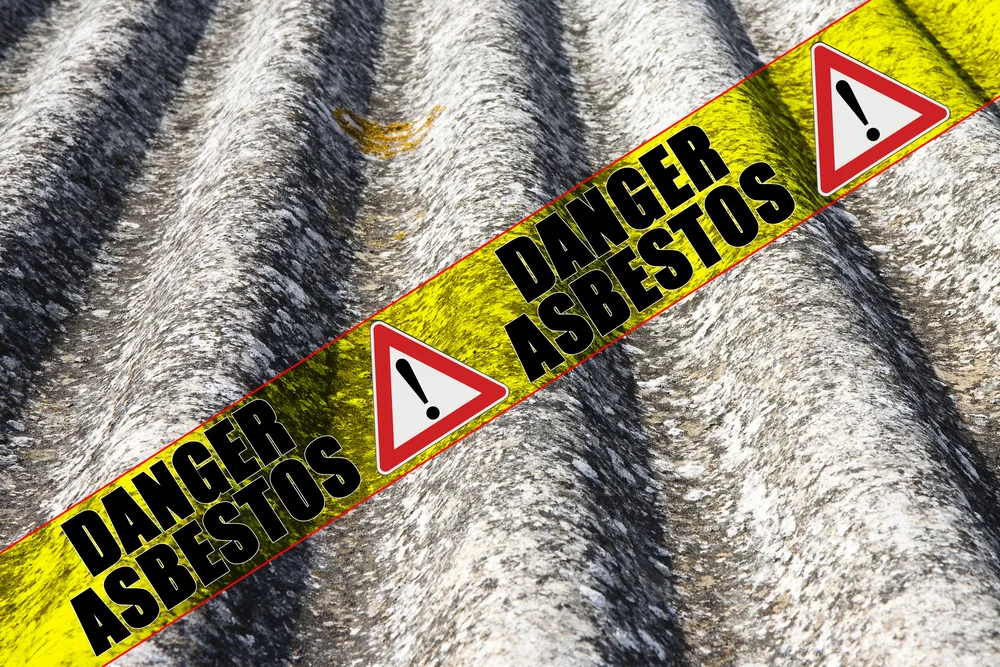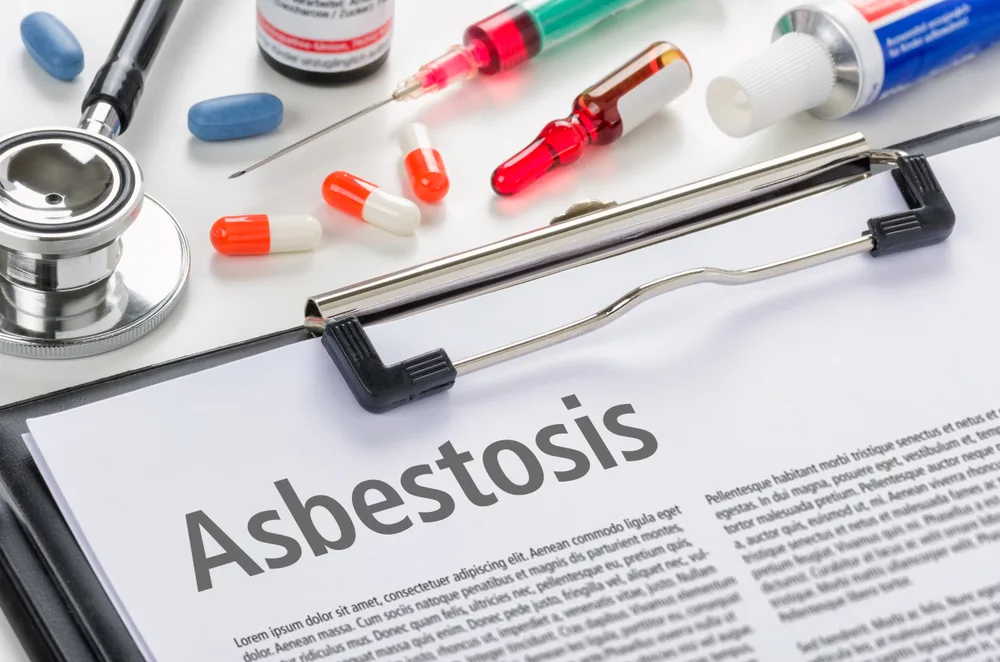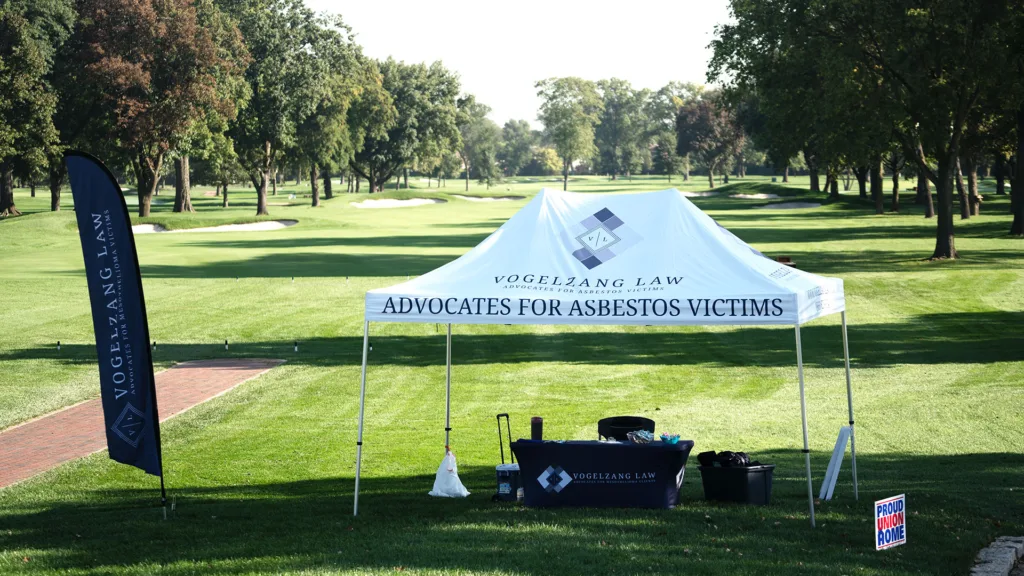Asbestosis is a term that is, unfortunately, becoming more familiar to many, particularly those who have experienced prolonged exposure to asbestos. This chronic lung disease, triggered by inhaling asbestos fibers, has severe health implications, often compromising the quality of life of those affected.
Whether you’re directly affected by the disease or are just seeking to broaden your understanding, gaining insights into asbestosis can help promote our collective health and safety.
At Vogelzang Law, our asbestosis lawyers understand the complexities surrounding asbestos-related diseases. Our commitment extends to not only representing victims in legal proceedings but also enhancing public understanding of this disease.
We assert the importance of being informed about the potential risks associated with asbestos exposure and the available legal avenues should the unfortunate occurrence of disease arise.
Our mission goes beyond just litigation — we aim to promote a comprehensive awareness and proactive stance regarding asbestos exposure and its implications on health.
Understanding Asbestosis
Asbestosis is a chronic lung disease directly associated with asbestos exposure. When individuals inhale asbestos fibers—microscopic, durable fragments usually related to heat-resistant materials—these fibers can become trapped inside the lungs. Over time, the accumulation of these fibers in the lungs prompts the formation of scar tissue, a process known as fibrosis.

The scar tissue, unfortunately, does not function as healthy lung tissue. It does not expand and contract normally, which leads to the primary complications of asbestosis. The restrictive nature of this scarred lung tissue results in diminished lung volume and makes oxygen transfer from the lungs to the bloodstream less efficient. This inefficiency, in turn, can lead to shortness of breath—one of the most prominent symptoms of asbestosis.
Asbestosis develops due to prolonged and significant exposure to asbestos. Such exposure often occurs in occupational settings, such as construction, shipbuilding, or industries where asbestos-containing materials are present. It’s less common for occasional contact with asbestos to result in asbestosis.
Importantly, asbestosis is a progressive condition, meaning it can worsen over time, especially if asbestos exposure continues. Though treatments can manage symptoms and improve quality of life, there is currently no cure to reverse fibrosis in the lungs.
Realizing you or a loved one may have been exposed to asbestos can be alarming, given the potential health implications. Not only is it crucial to seek medical care, but it is equally important to understand your legal rights. This is where Vogelzang Law can come to your aid, offering legal assistance to victims of asbestosis and asbestos exposure.
Symptoms of Asbestosis
Asbestosis leads to the formation of scar tissue—fibrosis—in the lungs.
This scar tissue interferes with normal lung function, resulting in asbestosis symptoms.
- Shortness of Breath: The most common symptom of asbestosis is breathlessness. In the early stages, you might experience it only during physical activities. However, as the disease progresses, shortness of breath may become much more constant—even when you’re at rest.
- Persistent Dry Cough: Another hint towards the presence of asbestosis is a continuous, dry cough that isn’t associated with other common illnesses like cold or flu.
- Chest Tightness or Pain: Some individuals with asbestosis may also experience a feeling of tightness or pain in the chest. This symptom results from the difficulty your lungs face in expanding and contracting due to fibrosis.
- Weight Loss: Unexplained weight loss could also be a sign of asbestosis. This weight loss may stem from the increased effort of breathing, which burns more calories, and from a decrease in appetite.
The onset of symptoms often takes a considerable amount of time post-exposure—frequently decades. Nevertheless, if you’ve been exposed to asbestos and begin experiencing these symptoms, it’s crucial to consult a healthcare provider as early as possible. Earlier detection can lead to better management of the condition and potentially slow the progression of the disease.
Dealing with a diagnosis of asbestosis can be overwhelming. At Vogelzang Law, we navigate the legal aspects of this disease, ensuring that victims of asbestos exposure are duly compensated and protecting their legal rights.
Diagnosis and Treatment of Asbestosis
Asbestosis diagnosis generally hinges on carefully examining a patient’s medical history, an exposure history indicative of asbestos contact, and various imaging studies.
Using patient history, physicians often focus on the symptoms presented and investigate any prior, continual contact with asbestos, especially in an occupational setting. This step is crucial because, as mentioned earlier, asbestosis results from prolonged and significant exposure to asbestos.
Medical imaging tests form an integral part of the diagnostic process. A chest X-ray or a computerized tomography (CT) scan can reveal lung scarring, a hallmark of asbestosis. In some instances, a bronchoscopy might be conducted, where a thin tube equipped with a light and a small camera is passed through your nose or mouth and into your lungs. This in-depth examination helps in visualizing the internal state of the lungs.

Unfortunately, asbestosis, being the direct result of irreversible lung fibrosis, currently has no cure. However, treatments and management strategies aim to relieve symptoms and lower the chances of exacerbating lung damage.
Treatment protocols typically involve pauses from work environments involving asbestos and adopting changes to reduce further inhalation. Pulmonary rehabilitation and oxygen therapy can be beneficial for those with shortness of breath. Medication like bronchodilators or steroids could be prescribed to those experiencing coughing and chest pain symptoms. In very severe cases, a lung transplant may be a consideration.
Living with Asbestosis
Living with asbestosis, a chronic and progressive lung disease, can present several challenges. Managing this condition often entails lifestyle changes and a focus on maintaining the best possible health while minimizing the burdens.
Patients with asbestosis should avoid further exposure to asbestos and other lung irritants, such as tobacco smoke. High-risk environments, particularly certain occupational settings, may need to be avoided or managed closely.
Regular medical check-ups are crucial to monitor disease progression and adjust treatment as necessary. Keeping these appointments helps to ensure that the disease is managed as effectively as possible and contributes to the early identification of any potential complications.
Living a healthy lifestyle can also assist with disease management. Exercise, good nutrition, and enough sleep can help maintain physical health and support overall well-being.
Mental and emotional support is also integral to life with asbestosis. Support groups, therapy, or simply conversations with friends and family about the experience can open up outlets to express concerns, fears, or frustrations.
Of course, living with asbestosis doesn’t just impact the patient. Families and loved ones must also learn to navigate the landscape of this disease. It’s important for everyone involved to educate themselves about asbestosis to form a supportive network around the patient.
Seek Support With Vogelzang Law

Obtaining legal counsel from Vogelzang Law can help you navigate potential legal avenues, such as pursuing compensation for asbestos-related injuries. We are committed to providing support and representation for victims of asbestos exposure, helping to secure the best possible outcome in every case.
Call us today at (312) 466-1669 for a free consultation with our experienced asbestos exposure attorneys and find out if we can help you seek compensation for asbestos-related illness.



